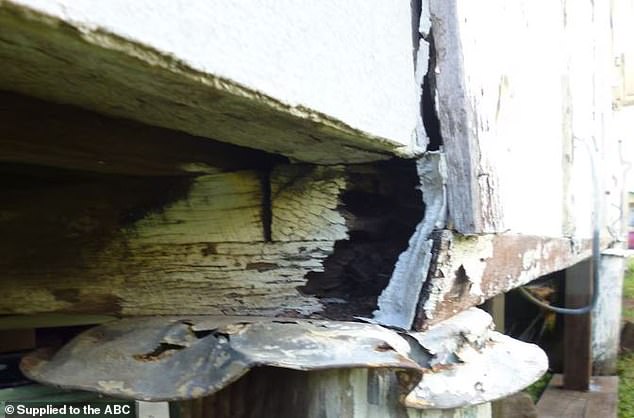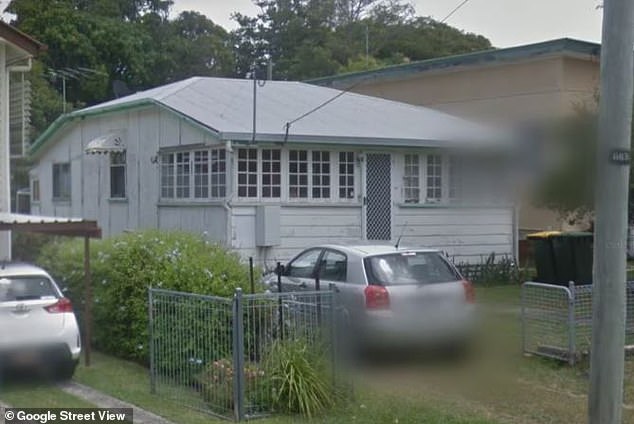A tenant who was given just hours to vacate his home after complaining for years that the property was “sinking” has won $5,000 after taking the matter to court.
Malcolm, who did not want to use his real name, had been living in the rental house in Moreton Bay, north of Brisbane, for seven years.
However, in 2019, he noticed that the home’s bathroom appeared to be sinking and emailed Ray White Woody Point’s real estate agent with photos of the buckled internal wood and rotted wood.
The house continued to pass property inspections until June 4 of this year, when it was deemed “uninhabitable.”
Malcolm received an eviction notice the next day and was only given 16 hours to vacate the house.
He decided to take his agent to the Queensland Civil and Administrative Tribunal (QCAT) for failing to meet minimum housing standards. The ABC reported.
The minimum housing standards, which were introduced last September, just a month before the tenant signed a new lease for the house, require agents to ensure the property is in good condition, weatherproof and structurally sound.
In filings in state civil court, the house was described as being propped up in places with bricks and stones where stumps had rotted away.
Malcolm was given 16 hours to vacate his rental home in Moreton Bay, north of Brisbane, after years of complaining the property was “sinking”.
Tribunal Judge Peter Eardley concluded late last month that the “structural integrity” of the house had “substantial problems” and that the agent had denied responsibility.
Within weeks of receiving the eviction notice, the agent put the property up for sale, describing it as needing “a little TLC (or a bulldozer).”
Eardley said the agent opted to sell the property rather than make basic repairs to make it habitable.
“Clearly the landlord had no intention of doing anything to put the property in a state where it would be habitable for a tenant,” Mr Eardley said.
Ray White Woody Point representative Jeffrey Brown told the court he had cared for the property for “many, many years” and it wasn’t until June that he noticed a problem with the property.
Brown explained that during an inspection in May or June he noticed that Malcolm had placed screwdrivers and wrenches under the stumps of the house.
The agent asked the carpenter, who inspected and cleaned the property six months earlier, to take a look at the home’s structural integrity.
The carpenter assessed the stumps and said, “Hey, that’s not safe,” Mr. Brown told the Court.
Brown submitted a five-paragraph statement from the carpenter to the court explaining that the home had met minimum standards as of the June 4 inspection.
The carpenter wrote that the bathroom and shower had always been “usable” despite numerous emails from Malcolm claiming they were “sinking”.
Eardley told Brown he “can’t be serious” after questioning the timeline he presented to the court.

Tribunal Judge Peter Eardley concluded late last month that the “structural integrity” of the house had “substantial problems” and that the agent had denied responsibility.
He claimed the stumps had been in a state of disarray much longer than on June 4 after examining photographs showing one stump supported by six bricks and another by stones.
“This situation does not appear to me in any way to be a true statement of the landlord’s knowledge of the condition of these premises,” Mr. Early stated in his decision.
Malcolm requested $17,359.50 in compensation to cover his moving costs, lost income and back rent through last September.
Mr. Early awarded the tenant $5,000 and explained that his enjoyment of the property was “disadvantaged” because the agent refused to fix the property’s problems.
However, he rejected several of Malcolm’s claims, including that the state of the house had affected his cats.
The property sold for $590,000 within weeks of going on the market, but has since been torn down.

